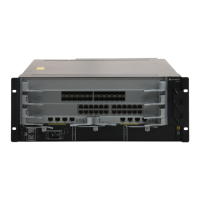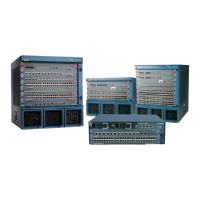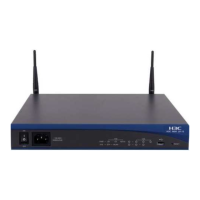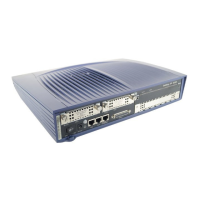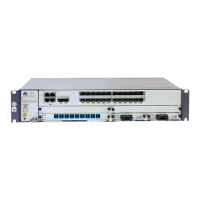6.1 Introduction to Multicast Route Management
This section describes the principle and concepts of multicast routing, forwarding, and RPF.
In the multicast implementation on the S9300, the multicast routing and forwarding are managed
by the following tables:
l Each multicast routing protocol maintains its own routing tables, such as the PIM routing
table.
l Routing information of various multicast routing protocols builds a general multicast
routing table.
The multicast routing table is in the multicast route management module. It is composed
of a group of (S, G) entries. (S, G) indicates the routing information of the multicast data
that a source S sends to a multicast group G. If the multicast route management module
supports multiple multicast protocols, the routing table contains multicast entries that are
generated by various types of protocol. The routing entries are directly copied to the
forwarding table.
l The multicast forwarding table is used to directly control the forwarding of multicast
packets.
The multicast forwarding table is used to forward multicast packets. The multicast
forwarding table is consistent with the multicast routing table.
The multicast routing protocol adopts the RPF mechanism to create multicast routing entries to
ensure that multicast packets can be transmitted along the correct paths.
The system performs RPG check based on the following routes:
l Unicast route
The unicast routing table collects the shortest paths to each destination.
l MBGP route
The MBGP routing table provides the multicast routing information.
l MIGP route
The MIGP routing table provides the routing information calculated based on the physical
interfaces of TE tunnel. The IMBGP routing table is used to forward multicast packets.
l Static multicast route
The static multicast routing table provides the information on the RPF route that is specified
through static configuration.
6.2 Multicast Route Management Features Supported by the
S9300
This section describes multicast route management features supported by the S9300.
Static Multicast Route
Static multicast routes are the basis of the RPF check.By configuring a static multicast route,
you can specify an RPF interface and an RPF neighbor for the specific source of packets on the
S9300.
6 Multicast Route Management
Quidway S9300 Terabit Routing Switch
Configuration Guide - Multicast
6-2 Huawei Proprietary and Confidential
Copyright © Huawei Technologies Co., Ltd.
Issue 01 (2009-07-28)

